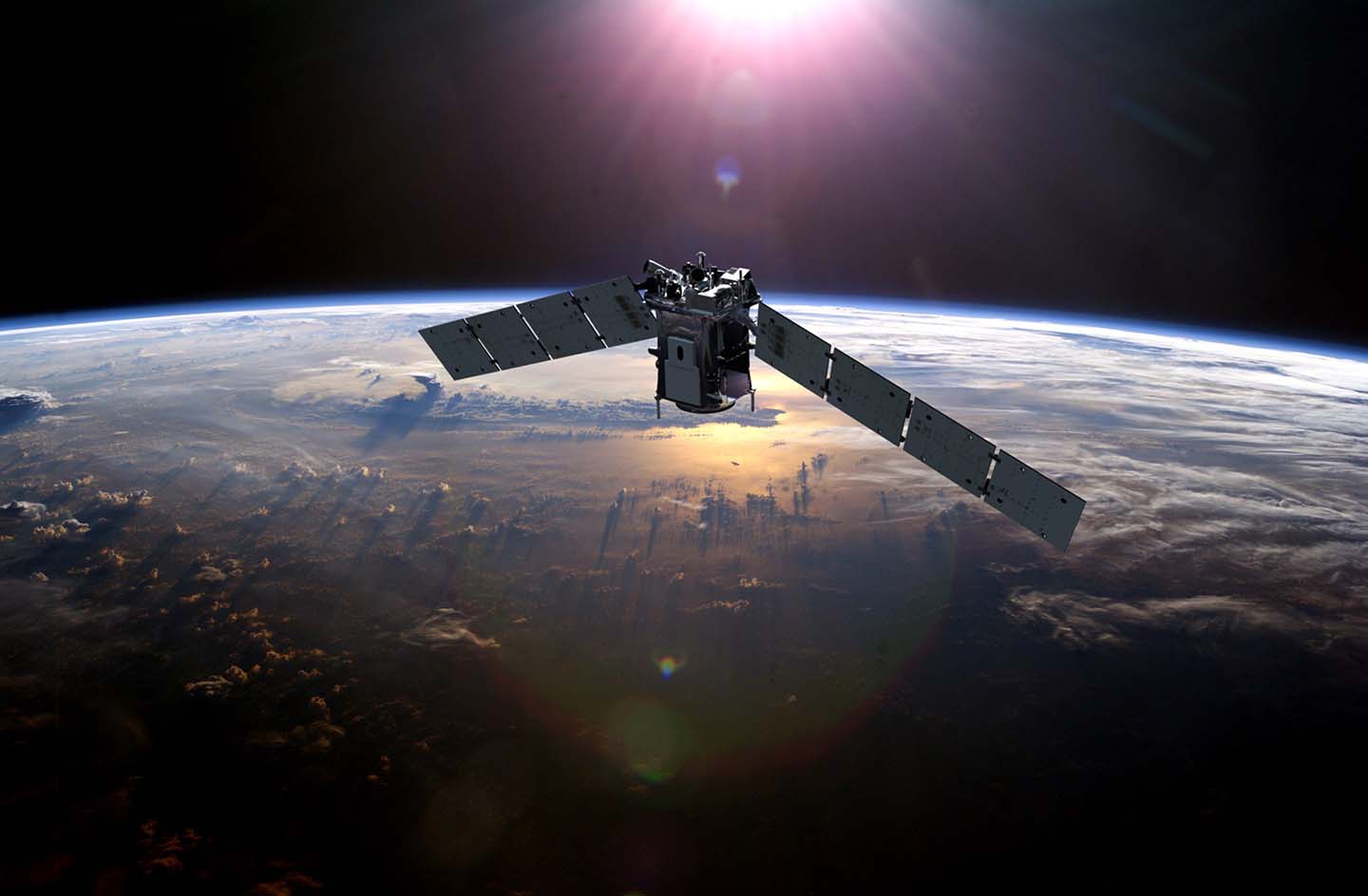Press Release
TIMED Atmospheric Spacecraft Marks 10 Years of Groundbreaking Science
Since its launch a decade ago on Dec. 7, 2001, NASA’s TIMED (Thermosphere, Ionosphere, Mesosphere Energetics and Dynamics) spacecraft has collected more data on the upper atmosphere than any other satellite, and has provided an unprecedented look at the gateway between Earth and space. The most recent findings by TIMED have allowed scientists to better characterize the state of the upper atmosphere, and are establishing a new knowledge base for atmospheric research.
NASA’s Heliophysics division has extended the TIMED mission four times since its launch in order to continue the study of naturally-occurring and human-induced influences on our upper atmosphere. TIMED, built and operated by the Johns Hopkins University Applied Physics Laboratory (APL), in Laurel, Md., has provided information on what was one of the least explored and least understood regions — the mesosphere and lower thermosphere/ionosphere (MLTI) — that help protect Earth from harmful solar radiation.
TIMED will continue collecting and analyzing data through 2014 and is focusing now on a problem that has long puzzled scientists: how to differentiate between changes induced by the sun and by humans in this atmospheric region. Scientists have been conducting studies during the decreasing phase of the sun’s last 11-year solar cycle. By the end of the mission, TIMED scientists will have collected data for more than a full solar cycle, and will be able to provide a comprehensive picture of changes. So far, scientists have focused on characterizing the spatial and temporal variation of the upper atmosphere temperature and density, and understanding the sources of the observed changes.
“Ten years ago, the knowledge we had about the upper atmosphere structure and its variability was from limited ground-based, rocket, and satellite observations. Today, by studying daily, seasonal and yearly variations on a global scale, with the comprehensive data set collected by TIMED, we are able to get a full picture of the driving forces behind the observed atmospheric changes,” said Sam Yee, TIMED project scientist at APL. “Based on TIMED observations, we have been able to study upper atmosphere weather phenomena and characterize the seasonal climate variability. With a longer data set, we will be able to better examine the decadal-scale changes, including the human-induced effect caused by the increasing greenhouse gases in the lower atmosphere.”
Since its launch, TIMED has made key findings about how the sun’s energy affects our upper atmosphere. “TIMED’s comprehensive studies of our atmosphere are drawing the interest of the global science community,” says APL’s Elsayed Talaat, TIMED deputy project scientist. “We’ve collected an order of magnitude more data than any other upper atmospheric mission and TIMED data is cited by many international scientists. TIMED is already the baseline for future studies of this region.”
TIMED scientists are comparing their data against existing atmospheric models, as well as data collected before TIMED was launched in 2001, to better analyze phenomena occurring in the MLTI region. They believe cooling temperatures in this region are causing the thermosphere to shrink (or become less dense) and its composition to change. A result of a less dense thermosphere is reduced drag on satellites in space, and that affects how long spacecraft and/or space debris stay in orbit. Composition changes in the thermosphere also alter ionospheric structures that affect radio wave propagation and communications.
TIMED is collaborating with other Heliophysics missions to investigate the energy chains responsible for disturbances in our upper atmosphere and is paying particular attention to temperature changes there. One of these is the APL designed and built Advanced Composition Explorer (ACE) spacecraft, which continually provides interplanetary magnetic field data and solar wind speed and density measurements for TIMED investigations; another is the Solar Dynamics Observatory (SDO), which gives TIMED scientists continuous solar radiation measurements and new views of how solar activity is created.
TIMED scientists continue to work with the APL-built Special Sensor Ultraviolet Spectrographic Imager (SSUSI) instruments onboard Defense Meteorological Satellite Program spacecraft. Nearly identical to TIMED’s Global Ultraviolet Imager (GUVI) instrument, SSUSI provides additional ionospheric measurements that help both missions collaborate on aurora-related energy inputs and characteristics that occur within the ionosphere and thermosphere.
“We’re looking forward to NASA’s twin Radiation Belt Storm Probes spacecraft, scheduled for launch in August 2012, to give us our first detailed look at how solar activity affects Earth’s radiation belts,” says Talaat. The Radiation Belt Storm Probes mission is part of NASA’s Living With a Star program and is designed to help understand the sun’s influence on the Earth and near-Earth space by studying the planet’s radiation belts on various scales of space and time.
Since TIMED was launched, APL has been responsible for project science leadership, spacecraft mission operations and sustaining engineering, as well as public outreach and education initiatives.
Next summer, a TIMED 10th Anniversary Science Symposium is planned at APL where scientists from all over the globe will share their findings during the multiple day seminar.
For more information, visit http://www.timed.jhuapl.edu.
In the 10 years since its launch TIMED has:
- Completed 53,000 orbits of the Earth
- Traveled in excess of 1.4 billion miles
- Successfully completed 7,300 contacts with APL’s Laurel, MD ground station
- Generated nearly 500 published papers in major scientific journals
